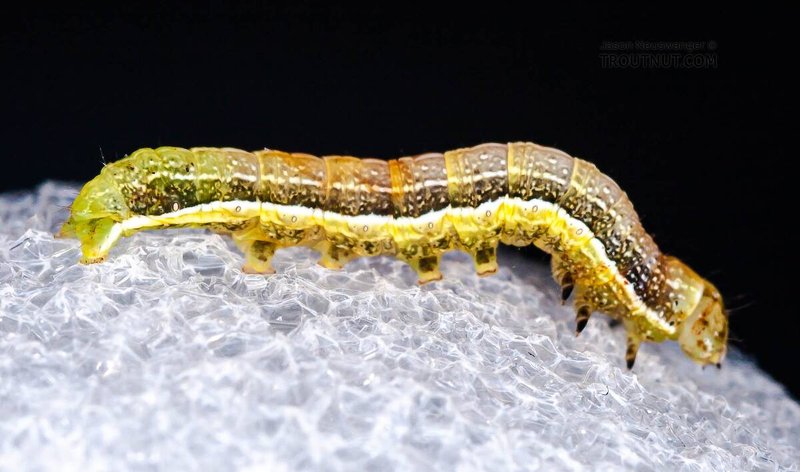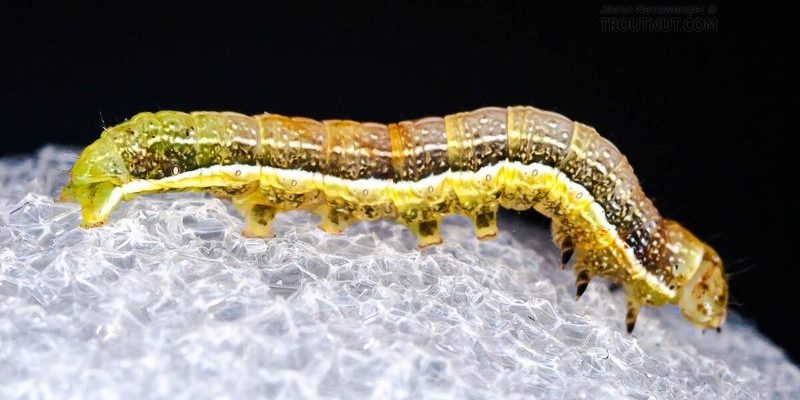
Imagine a bustling community where everyone plays a vital role in keeping things moving. Inchworms and moths are part of that community, serving as important players in our ecosystems. Just like how a remote control needs batteries to work, each stage in the lifecycle of these creatures fuels the next stage. So, let’s take a closer look at how inchworms and their adult moth counterparts interact and thrive in nature.
What Are Inchworms?
Inchworms are actually the larvae of various types of moths, predominantly from the Geometridae family. These tiny critters have a unique way of moving that resembles measuring or “inching” along the ground. Have you ever seen one? They pull themselves forward using their midsections, creating that characteristic “looping” motion. This is pretty fascinating, given that it’s how they navigate the world while they munch on leaves.
Typically, inchworms blend in with their surroundings, making them masters of camouflage. Their green or brown bodies mimic the leaves and branches they inhabit. This isn’t just for show; it’s a clever survival tactic. By staying hidden, they can avoid becoming a meal for hungry birds or other predators. You might be wondering how this sneaky behavior connects to their transformation into moths, and that’s where things get interesting.
The Lifecycle of Inchworms
Inchworms, like all moths, undergo a complete metamorphosis, which includes four distinct stages: egg, larva (the inchworm stage), pupa, and adult moth. It starts with the mother moth laying her eggs on suitable host plants. You can think of these eggs as tiny packages of potential, waiting for the right conditions to hatch.
Once the eggs hatch, the inchworms emerge to start their journey. They consume leaves and grow, shedding their skin multiple times in a process called molting. This stage can last several weeks, depending on the species and environmental factors. Honestly, it’s like watching a kid grow up—eating, growing, and then preparing for a big change.
Eventually, the inchworm will find a safe spot to pupate. This is when they spin a silky cocoon or burrow into the ground, entering the pupa stage. Picture them as caterpillars taking a deep nap before emerging as beautiful moths. This quiet period is crucial for their transformation—everything they’ve been doing is leading to this moment.
From Inchworm to Moth: The Transformation
After the pupation period, which can vary from a few days to several weeks, the adult moth emerges. This process is nothing short of magical. Imagine a superhero bursting out of a cocoon, ready to take on the world! The newly emerged moth often has to pump fluid into its wings to expand them fully. It’s a vulnerable time, but once those wings are dry and strong, it’s time for the moth to take flight.
Adult moths come in various shapes, sizes, and colors. Some species are known for their stunning patterns, while others are more muted. This diversity helps them blend into their environments or attract mates. Moths play important roles in their ecosystems by participating in pollination, just like bees. They’re part of a cycle that keeps our environment healthy and thriving.
You might be wondering why this transformation matters. Well, each stage of the inchworm’s lifecycle contributes to the larger ecosystem. Adult moths serve as food for birds and bats, while their larvae help control plant populations. They’re a small but significant part of the food web. Just like a beautiful tapestry, every thread counts.
Native Moth Species and Their Habitats
Not all moths are the same, and many native species are specially adapted to their local ecosystems. For example, the Eastern Tent Caterpillar Moth and the Fall Webworm are familiar sights in many areas. Their habitats range from forests to gardens, where they often lay eggs on specific host plants. This connection to their environment is crucial for their survival.
These native moths have developed unique relationships with specific plants. Each species of moth may have a preferred host plant, allowing them to thrive. This dependence on certain plants makes them sensitive to changes in their environment, such as habitat loss or pesticide use. Protecting these habitats is vital for their lifecycle and, ultimately, the entire ecosystem.
By keeping an eye on local moth populations, we can gauge the health of our environment. Think of them as nature’s indicators, telling us when something isn’t quite right. This connection isn’t just fascinating; it’s crucial for biodiversity and ecosystem stability.
The Importance of Ecosystem Balance
Inchworms and moths are part of a delicate balance in nature. When their populations are healthy, it often means the environment is thriving too. Conversely, if their numbers are dwindling, it can signal problems. This is why studying these creatures is so important.
Moths, including inchworms, have roles that go beyond just being food sources. They help with pollination and contribute to soil health through their life cycles. When they feed on plants, they can help control those plants’ growth, which can benefit the whole ecosystem. If there are too many or too few, it can lead to imbalances that affect other species, including humans.
As stewards of the planet, it’s our job to protect these little guys and their habitats. Simple actions, like creating butterfly gardens or reducing pesticide use, can make a significant difference. Every small step counts, and who knows? You might even find an inchworm munching away in your own backyard.
How You Can Help Inchworms and Moths
If you want to contribute to the well-being of inchworms and native moths, there are several practical steps you can take. Here’s a quick rundown:
- Plant native species: Choose plants that attract moths and caterpillars, providing a natural habitat.
- Avoid pesticides: Reducing the use of chemical pesticides can protect these creatures and promote healthy ecosystems.
- Build a moth-friendly garden: Create a diverse environment with different plants and flowers to attract various moth species.
- Educate others: Share what you know about moths and inchworms with friends and family to raise awareness of their importance.
These simple actions can lead to healthier environments. When you support native moths and their lifecycle, you’re supporting the broader ecosystem.
In closing, the connection between inchworms and native moth species is a beautiful example of nature’s complexity. By understanding their lifecycle and significance, we can better appreciate the intricate systems that sustain life. Let’s continue to nurture and protect these fascinating creatures and the ecosystems they inhabit.

